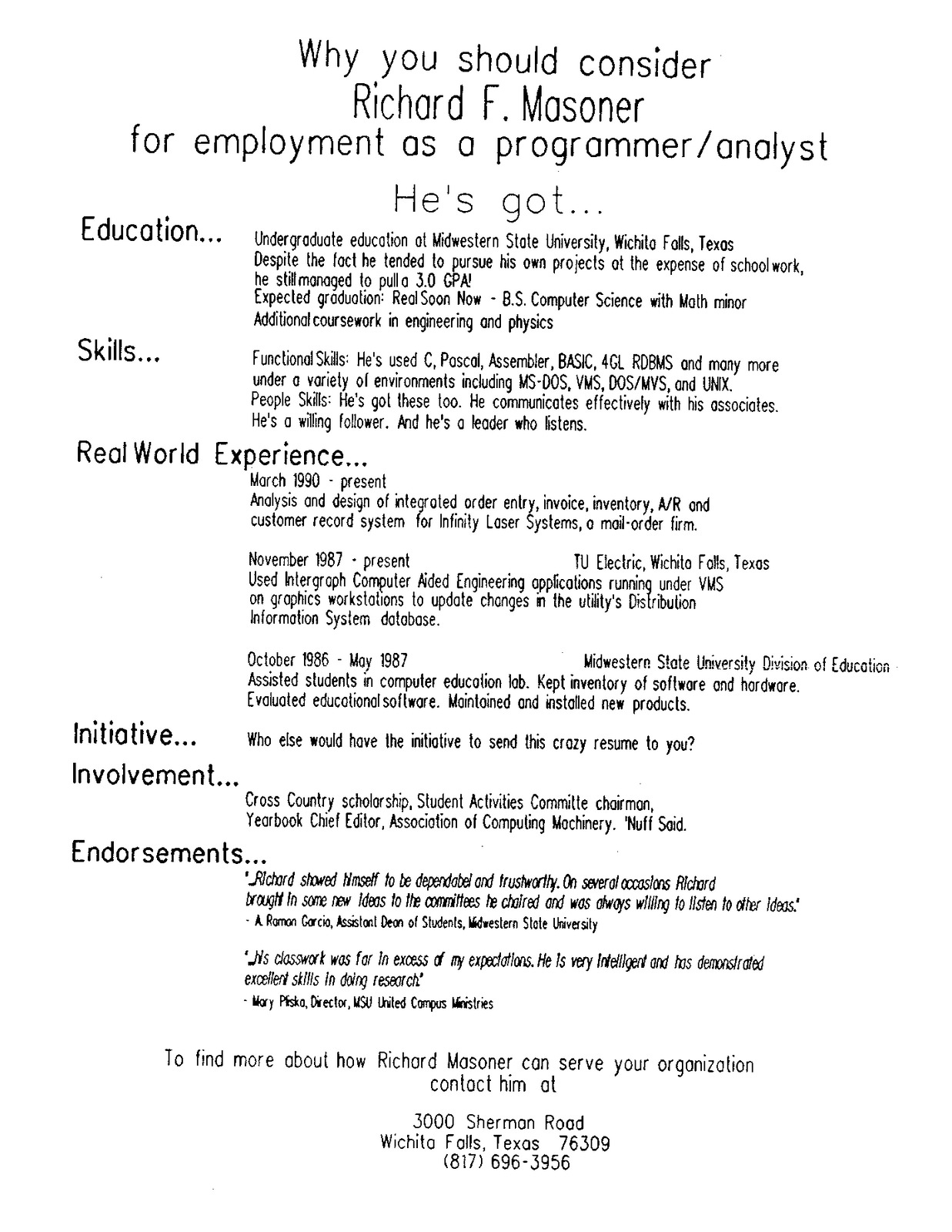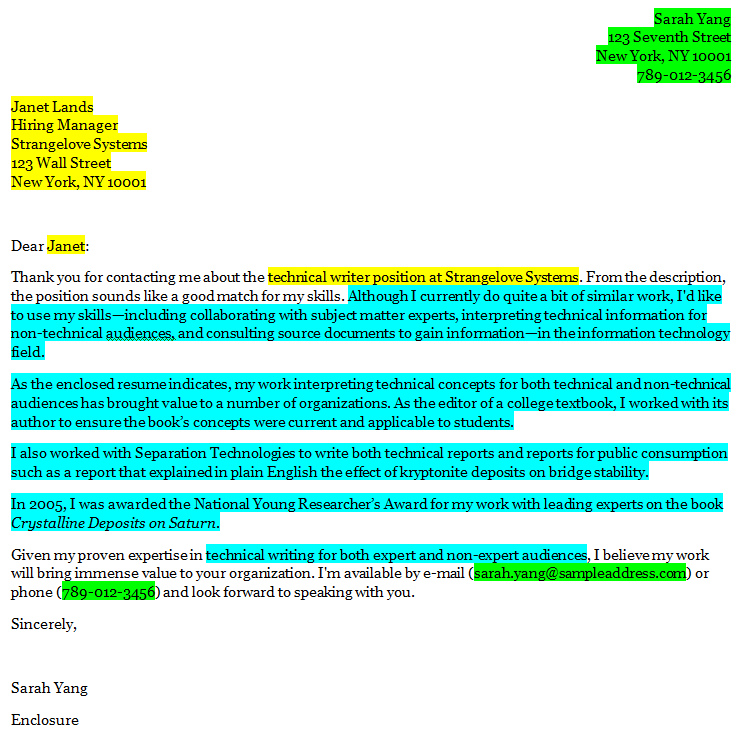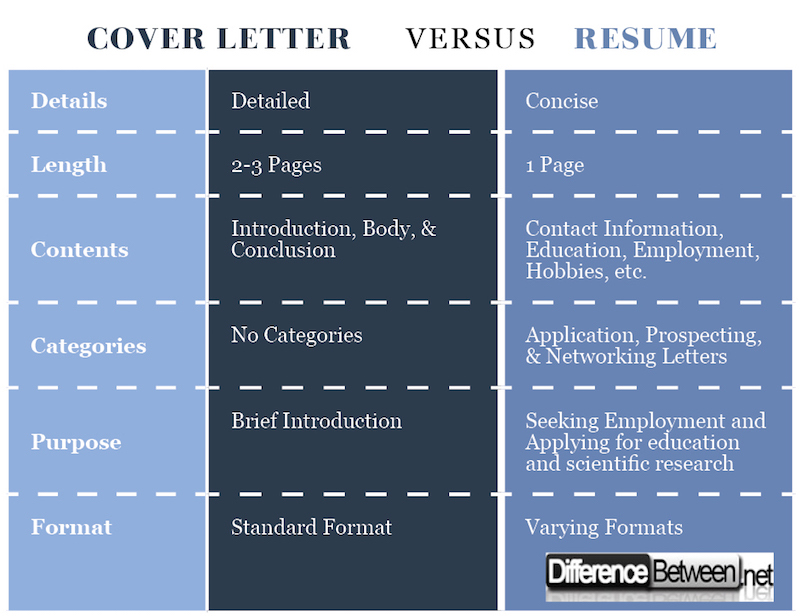Difference Between Cover Letter and Resume
A resume and a cover letter are documents used in a job application or when applying for college and university positions in different parts of the world. The two documents are supposed to supplement one another because they contain related information. Despite contain related information, it is important to highlight that there are significant differences between the two documents that individuals should understand.
What is a Resume?
A resume is a formal document that contains detailed information about an individual who is seeking an employment opportunity in a specific organization. It is important to highlight that a resume contains detailed information about the academic and employment details of the applicant. Moreover, resumes contain personal information such as hobbies and interests among other critical details.
What is a Cover Letter?
A cover letter is an official document that is used to by an applicant to introduce himself or herself to the potential employers and is usually attached to the resume. The role of the cover letter is to summarize the information in the resume while at the same time convincing the employer to evaluate the resume.
Difference Between Cover Letter and Resume
1) Details included in Cover Letter and Resume
One of the main difference between a cover letter and a resume is the number of details contained in each document. A cover letter is less detailed with much of the information reflecting what is on the resume. On the other hand, a resume is much detailed with every information present in this document fully elaborated concerning details and achievements. It is worth noting that cover letters only contain salutation, introduction, body, and conclusion while at the same time referring the reader to get detailed information from the resume.
2) Length of Cover Letter vs. Resume
Due to the varying amount of details contained in the two documents, their lengths vary. A cover letter contains little amount of information which is less detailed. Therefore, human resource experts recommend that cover letters should not exceed one page. This is not the same for the resumes, which contains detailed information about an individual. The average length of the resume should be between two to three pages. It is important to highlight that long resumes are likely to discourage the potential employee to read while short resumes indicate little education and employment backgrounds, which portray a negative perspective against you.
3) Contents in Cover Letter and Resume
It is worth noting that cover letters and resumes contain different information that is conveyed to the employer for considerations. Cover letters usually contain information about a person, the work experience of an individual, the job profile, and the career goals of a person. The resume contains significantly different information which includes the contact information, education background, elaborate work experience, relevant work-related skills, affiliations, hobbies, and interests among other information that may position or portray an individual as best suited for a specific employment opportunity as compared to other people who have employed for the same job. Additionally, some of the information contained in the cover letter is significantly elaborated in the resume.
4) Purpose of Cover Letter and Resume
Another difference is that each document has its specific purpose, which indicates that the two documents cannot substitute one another but complement one another. The purpose of the cover letter is to briefly introduce an applicant and explain his or her interest and fit for the job. Moreover, cover letters complement the resume, and they are both attached to each other. The resume is used to provide the detailed information about an applicant to the employer in Europe, Middle East, and Asia among other countries. However, a resume is used by students when applying for academic admissions, education opportunities, and scientific or research positions in the United States.
5) Formatting of Cover Letter and Resume
Different formats are applied when writing both cover letters and resumes. A cover letter follows a formal and laid down format, which includes indicating the address of the recipient, your address, salutation, subject, body, and conclusion of the letter. This means that individuals should familiarize themselves with how to write a standard cover letter, which can be accepted in different parts of the world. On the other hand, resumes are tailor-made and may follow the format with which an individual would like their resumes to resemble. However, despite the different methods and forms of writing a resume, all the necessary information, which includes educational background, employment background, contact information, hobbies, and interests, should appear.
6) Categories/Types of Cover Letter and Resume
Lastly, cover letters and resumes vary in that there are three types of cover letters while there is only one type of resume. One category of the cover letters is the application letter, which responds to a job opening, the prospecting letter, which enquires about possible job openings in any organization, and the networking letters, which are designed by individuals to request assistance in job searching. Individuals will write any category of the letter, but they will attach it to the same resume because it does not change and there are no different categories of resumes.
Difference Between Cover Letter and Resume
Summary of Cover Letter and Resume
- Cover letters and resumes are formal documents used in a job application that all prospective employees should strive to understand.
- Understanding the differences between a cover letter and a resume positions an individual with a good chance of getting an interview appointment.
- All people should practice how to write formal and professional cover letters and resumes because they play a significant role in creating perspectives about you and they may give or deny you an employment opportunity.
- Difference Between Gross NPA and Net NPA - April 20, 2018
- Difference Between Job Description and Job Specification - April 13, 2018
- Difference Between Yoga and Power Yoga - April 10, 2018
Search DifferenceBetween.net :
Leave a Response
References :
[0]Dipboye, Robert L., Howard L. Fromkin, and Kent Wiback. "Relative importance of applicant sex, attractiveness, and scholastic standing in the evaluation of job applicant resumes." Journal of Applied Psychology 60.1 (1975): 39.
[1]Krannich, Ronald L., and William J. Banis. High impact resumes & letters. Impact Publications, 1982.
[2]Toth, Cheryl S. The effect of resume format on applicant selection for job interviews. MS thesis. Radford University, 1991.
[3]Image Credit: https://www.flickr.com/photos/govwin/6073972102
[4]lmage Credit: https://www.flickr.com/photos/bike/8276603918



